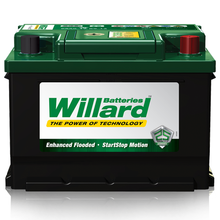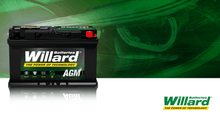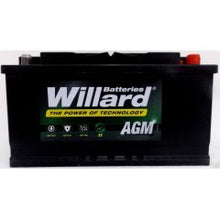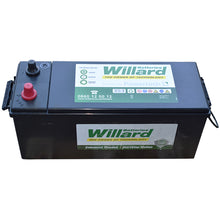Contact Us to find out whether there is a Willard Battery solution for your vehicle.
Please provide as much information about the vehicle, including Year, Make, Model Designation, VIN Number. If you have specifications on the current battery fitted, please supply that as well.
Note: We are also able to supply batteries for other vehicles such as trucks, motorbikes, recreational equipment etc.
* Batteries can be shipped via Road Freight across South Africa, for an additional fee. Contact for pricing. Prices quoted apply to collection only (Edenvale), unless otherwise specified.
Willard Batteries Overview
Rooted in the hearts of South Africans, this proud brand combines technology and a quest for perfection to bring you car batteries of peerless standing. Initially produced under licence to ESB, America, Willard Batteries won an enviable reputation for excellence in product quality. In 1981, Willard Batteries became 100% South African owned and over the years has worked hard to establish a reputation as a premium product. Rated amongst consumers as their favourite car battery brand of choice, Willard Batteries supplies the OE and replacement markets with a comprehensive range of premium quality automotive batteries. With a 25 month warranty across its range, it is little wonder that Willard Batteries remains one of the most respected and well loved brands in the country.
AGM Batteries Overview
Absorbent Glass Mat (AGM) are like wet cell batteries, but instead of having a free-floating electrolyte, it is bound in a special glass fiber separator. This makes the battery leak-proof, and ensures that, even if the battery case is damaged, no battery acid will escape. AGM batteries are versatile, high performing, and designed for high demands.
The battery is constructed to be airtight which allows for the internal recombination of oxygen and hydrogen, meaning there is minimal water loss. Each individual battery cell is equipped with a safety valve so that even in the case of excess pressure or fault, they will remain safe.
AGM batteries have significant advantages over simple starter batteries and can withstand up to three times more cycle life than a conventional starter battery. AGM batteries are also best suited for vehicles with automatic start-stop systems with braking energy recovery (recuperation), as a conventional starter battery is not built to handle the high-power demands of these systems. If a car with an advanced automatic start-stop system comes equipped with an AGM battery, only an AGM battery can be used as a replacement.
Cars with high energy consumption could also benefit from AGM batteries.
Application considerations
With braking energy recovery (recuperation) the energy which results from braking is not completely lost. Part of the energy recovered from the braking process is fed into the battery of the vehicle. AGM car batteries provide the technology that is suitable for recuperation.
A conventional wet battery (SLI) only starts the engine once per journey. The optimum 100% charge of an SLI only reduces once when starting and is charged by the alternator during the journey. With an automatic start-stop system, the engine restarts several times. As a result, the charge level of the battery also falls several times and on top of this, electrical consumers still need to be supplied with power during the standstill period. This puts an especially large load on the battery. During driving the battery is recharged just like a conventional starter battery. However, due to the recovery of braking energy, additional charge capacity must be available to be able to feed in the regenerative braking energy. AGM batteries are therefore operated in the partial charge range and only attain a full 100% charge during recuperation. In the subsequent stop phase, the charge is reduced due to the supply of electrical consumers, so that there is once again enough “room” available to store the energy from the next braking phase.








